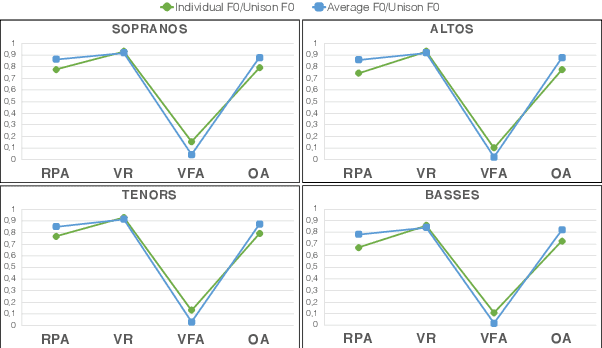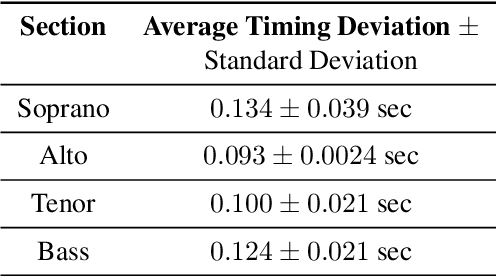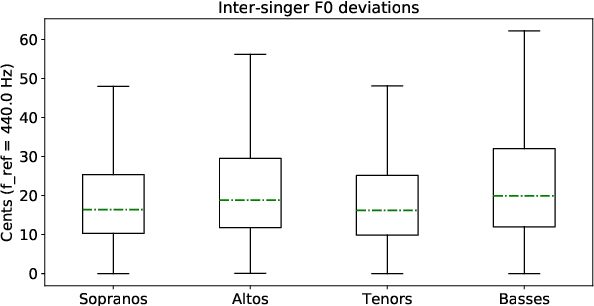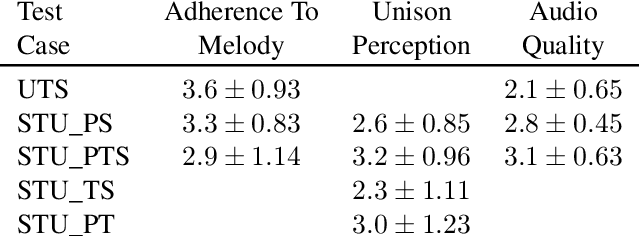A Deep Learning Based Analysis-Synthesis Framework For Unison Singing
Paper and Code
Sep 21, 2020



Unison singing is the name given to an ensemble of singers simultaneously singing the same melody and lyrics. While each individual singer in a unison sings the same principle melody, there are slight timing and pitch deviations between the singers, which, along with the ensemble of timbres, give the listener a perceived sense of "unison". In this paper, we present a study of unison singing in the context of choirs; utilising some recently proposed deep-learning based methodologies, we analyse the fundamental frequency (F0) distribution of the individual singers in recordings of unison mixtures. Based on the analysis, we propose a system for synthesising a unison signal from an a cappella input and a single voice prototype representative of a unison mixture. We use subjective listening tests to evaluate perceptual factors of our proposed system for synthesis, including quality, adherence to the melody as well the degree of perceived unison.
 Add to Chrome
Add to Chrome Add to Firefox
Add to Firefox Add to Edge
Add to Edge